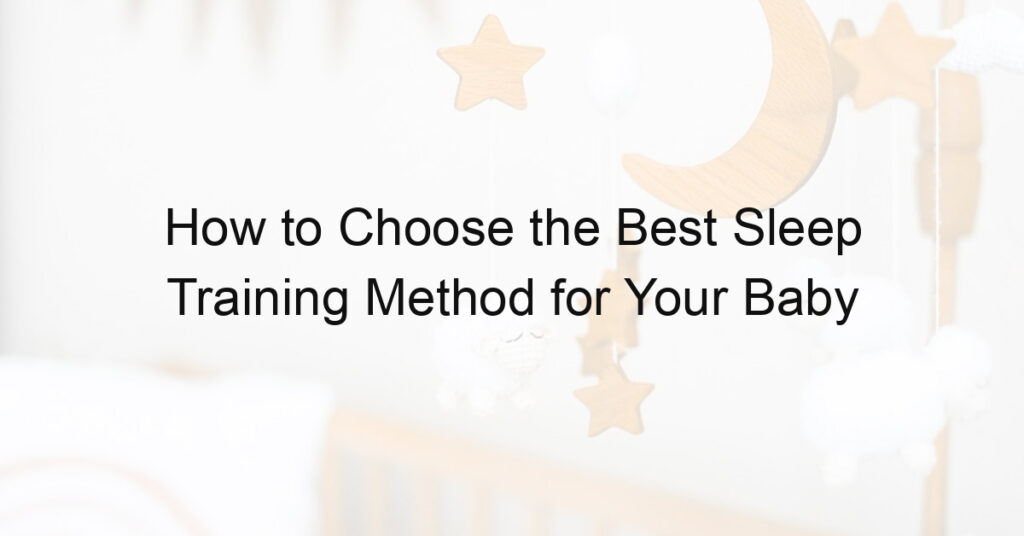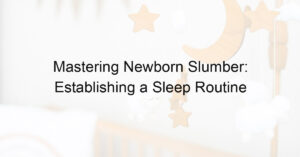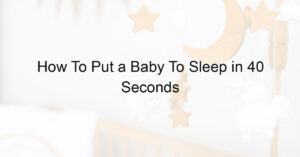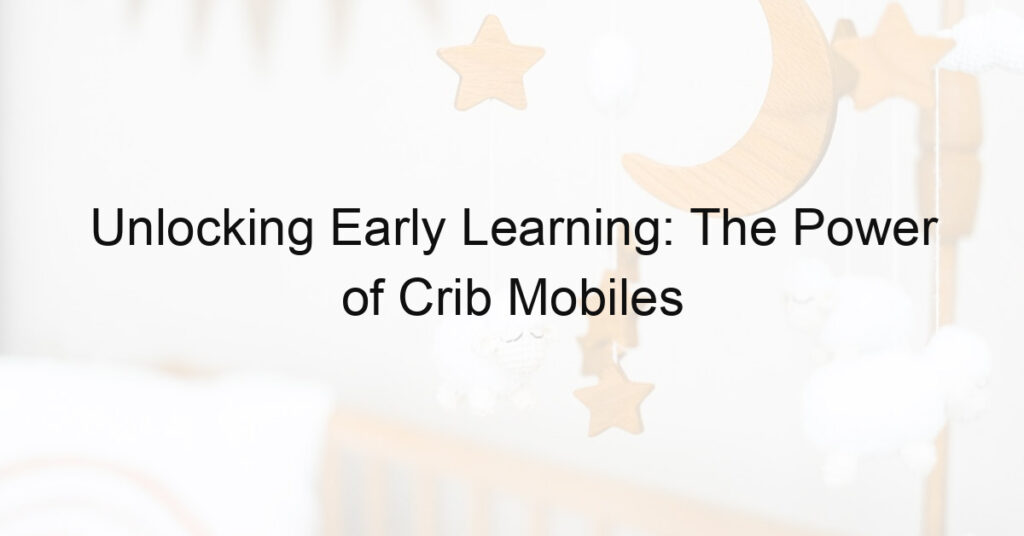Are you struggling to get your baby to sleep through the night? If so, you’re not alone. According to a recent study, nearly half of all parents report that their child has difficulty sleeping.
Fortunately, several different sleep training methods can help. But with so many options available, how do you know which one is right for your family?
In this blog post, we’ll give you some tips on how to choose the best sleep training method for your baby. Read on for more!
Which sleep training method is best for my baby?
When it comes to sleep training for babies, parents are inevitably faced with several choices.
One of the most popular strategies is the “cry it out” method, where babies are left to self-soothe until they eventually fall asleep.
This method can be effective in teaching babies healthy sleeping habits, but it is not advised for every situation.
Some parents may feel uncomfortable letting their babies “cry it out,” and thus opt for more gradual sleep training methods such as fading or bedtime fading.
Ultimately, which sleep training method you choose should depend on your family’s unique situation and comfort level.
Have an open conversation with your partner and pediatrician before committing to a particular strategy – that way, you can make an informed decision that takes your baby’s preferences into account.
Do pediatricians recommend sleep training?
Parents of young children are often wrestling with the question of whether or not to try sleep training.
It can be difficult to know where to turn for advice, but pediatricians typically recommend sleep training as a way of helping babies and toddlers learn healthy sleep habits.
While parents need to decide what kind of method will work best for their child, a pediatrician is an excellent source for guidance about the various ways that sleep training can provide support and structure in teaching little ones important life skills like self-soothing and how to fall asleep independently.
Even if parents decide against using any particular technique, talking through the pros and cons with a doctor will help them make an informed decision consistent with what’s best for their family.
What is the best age to sleep train a baby?
Sleep training a baby is a tough decision for parents, and it can be hard to figure out the best age to do it.
Generally, experts agree that babies should be at least 4 months old before attempting any kind of sleep training.
This is because, at this age, babies are usually able to start sleeping for longer periods so sleep training can be more effective.
It’s important not to jump the gun too soon, as it is well-accepted that exposing an infant under four months of age to any form of sleep training is far too early and could lead to problems great or small down the line.
With research and parental instinct being key factors in deciding when to go ahead with sleep training, making sure your little one is four months or older before beginning is always advisable.
What is the 5 10 15 minute method?
The 5 10 15 minute method is an efficient way to get in some physical activity without takinwastingmuch of your time.
It involves working out for five minutes, resting, or doing light activities such as stretching for ten minutes, then completing another five minutes at a higher intensity.
This approach is a good way to increase physical health, boost endorphins, and provide an active break throughout the day without needing large amounts of time.
Best of all, by adding more rest between periods of exercise, this method results in big improvements in strength with little risk of injury.
What are the ABCS of sleep training?
If you’re struggling with sleep and looking for solutions, you may have come across the term “sleep training.”
Sleep training can help both children and adults improve their sleep patterns and habits positively and effectively. What are the ABCs of sleep training?
It stands for Acknowledge, Balance, Consistency, and Support.
Acknowledge means recognizing what works best with your child’s personality. Balance means creating healthy expectations while recognizing different temperaments.
Consistency means consistently employing techniques like creating a comfortable bedtime routine to establish a pattern.
Finally, support is key— guiding the process goes a long way toward successful training!
Reflections:
Ultimately, choosing which sleep training method to use for your baby is a highly personal decision and all parents should prioritize the safety and well-being of their child while selecting the one they deem to be best.
While there are numerous approaches, only experimentation and a keen understanding of your baby’s temperament will make it possible to determine which method works best.
With that being said, keep in mind that it will take time to ensure that this new routine has become part of your infant’s daily life.
Be patient with both you and your baby to foster an effective, long-term sleep plan! Plus, it doesn’t hurt to have a little extra help around when you need it – don’t hesitate to reach out for advice from other parents or healthcare providers if necessary.
Lastly, remember that sleep training is simply one strategy and not an absolute solution for all babies – if something isn’t working for your little one, don’t be afraid to pivot and look for another approach.
Good luck on the fantastic journey ahead!














